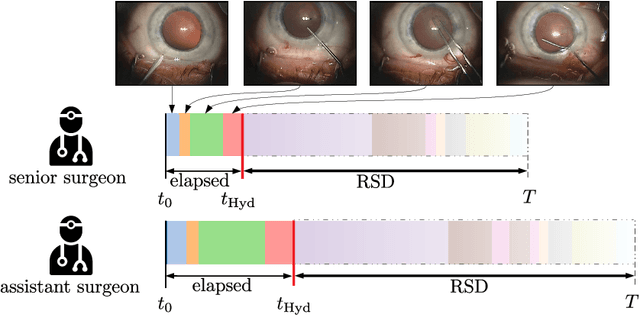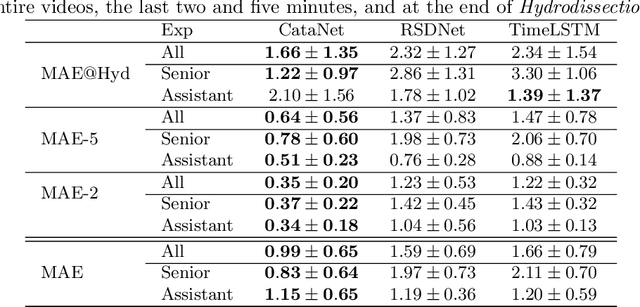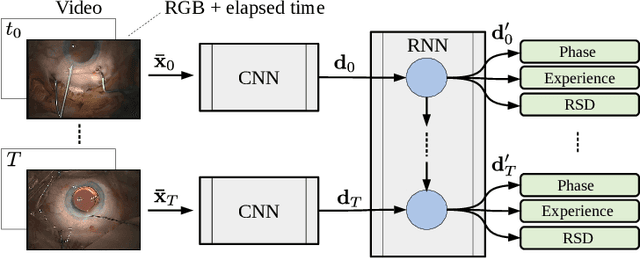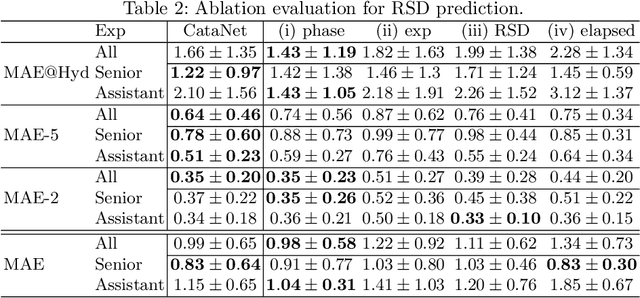Pablo Márquez Neila
SAM-DA: Decoder Adapter for Efficient Medical Domain Adaptation
Jan 12, 2025



Abstract:This paper addresses the domain adaptation challenge for semantic segmentation in medical imaging. Despite the impressive performance of recent foundational segmentation models like SAM on natural images, they struggle with medical domain images. Beyond this, recent approaches that perform end-to-end fine-tuning of models are simply not computationally tractable. To address this, we propose a novel SAM adapter approach that minimizes the number of trainable parameters while achieving comparable performances to full fine-tuning. The proposed SAM adapter is strategically placed in the mask decoder, offering excellent and broad generalization capabilities and improved segmentation across both fully supervised and test-time domain adaptation tasks. Extensive validation on four datasets showcases the adapter's efficacy, outperforming existing methods while training less than 1% of SAM's total parameters.
Domain Adaptation for Medical Image Segmentation using Transformation-Invariant Self-Training
Jul 31, 2023



Abstract:Models capable of leveraging unlabelled data are crucial in overcoming large distribution gaps between the acquired datasets across different imaging devices and configurations. In this regard, self-training techniques based on pseudo-labeling have been shown to be highly effective for semi-supervised domain adaptation. However, the unreliability of pseudo labels can hinder the capability of self-training techniques to induce abstract representation from the unlabeled target dataset, especially in the case of large distribution gaps. Since the neural network performance should be invariant to image transformations, we look to this fact to identify uncertain pseudo labels. Indeed, we argue that transformation invariant detections can provide more reasonable approximations of ground truth. Accordingly, we propose a semi-supervised learning strategy for domain adaptation termed transformation-invariant self-training (TI-ST). The proposed method assesses pixel-wise pseudo-labels' reliability and filters out unreliable detections during self-training. We perform comprehensive evaluations for domain adaptation using three different modalities of medical images, two different network architectures, and several alternative state-of-the-art domain adaptation methods. Experimental results confirm the superiority of our proposed method in mitigating the lack of target domain annotation and boosting segmentation performance in the target domain.
Full or Weak annotations? An adaptive strategy for budget-constrained annotation campaigns
Mar 21, 2023Abstract:Annotating new datasets for machine learning tasks is tedious, time-consuming, and costly. For segmentation applications, the burden is particularly high as manual delineations of relevant image content are often extremely expensive or can only be done by experts with domain-specific knowledge. Thanks to developments in transfer learning and training with weak supervision, segmentation models can now also greatly benefit from annotations of different kinds. However, for any new domain application looking to use weak supervision, the dataset builder still needs to define a strategy to distribute full segmentation and other weak annotations. Doing so is challenging, however, as it is a priori unknown how to distribute an annotation budget for a given new dataset. To this end, we propose a novel approach to determine annotation strategies for segmentation datasets, whereby estimating what proportion of segmentation and classification annotations should be collected given a fixed budget. To do so, our method sequentially determines proportions of segmentation and classification annotations to collect for budget-fractions by modeling the expected improvement of the final segmentation model. We show in our experiments that our approach yields annotations that perform very close to the optimal for a number of different annotation budgets and datasets.
CataNet: Predicting remaining cataract surgery duration
Jun 21, 2021



Abstract:Cataract surgery is a sight saving surgery that is performed over 10 million times each year around the world. With such a large demand, the ability to organize surgical wards and operating rooms efficiently is critical to delivery this therapy in routine clinical care. In this context, estimating the remaining surgical duration (RSD) during procedures is one way to help streamline patient throughput and workflows. To this end, we propose CataNet, a method for cataract surgeries that predicts in real time the RSD jointly with two influential elements: the surgeon's experience, and the current phase of the surgery. We compare CataNet to state-of-the-art RSD estimation methods, showing that it outperforms them even when phase and experience are not considered. We investigate this improvement and show that a significant contributor is the way we integrate the elapsed time into CataNet's feature extractor.
 Add to Chrome
Add to Chrome Add to Firefox
Add to Firefox Add to Edge
Add to Edge